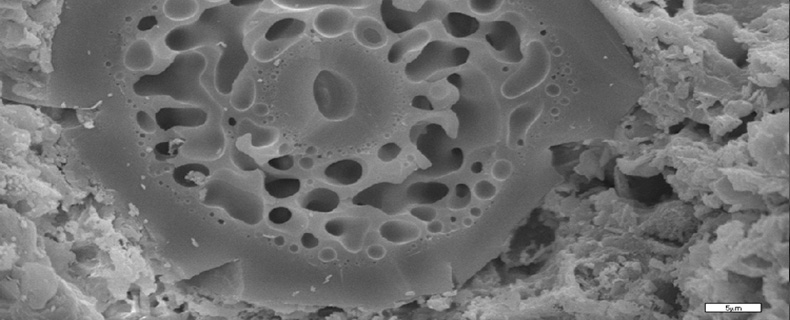| School |
Natural Sciences |
Academic Unit
|
Geology Department |
Level of Studies
|
Undergraduate |
Course Code
|
GEO_822E |
| Εξάμηνο σπουδών |
8ο |
Course Title
|
GIS and Remote Sensing in Applied Geology.Data Analysis and modelling. |
Independent Teaching Activities
|
Lectures, laboratory, tutorial |
Weekly Teaching Hours
|
2 (lect.) / 2 (lab.) / 1 (T) |
| Credits |
5 |
Course Type
|
Field of Science (GIS, Remote Sensing, Photogrammetry) |
Prerequisite Courses
|
GIS and Remote Sensing in Applied Geology (optional, 5th semester) |
Language of Instruction & Examinations
|
Greek |
Is the Course offered to Erasmus Students
|
Yes in English |
| Course Web-Page (URL) |
https://eclass.upatras.gr/courses/GEO307/ |
Learning Outcomes
|
The course aims at training students in creation and management of databases and at familiarizing them with advanced digital image processing techniques. Furthermore the course introduces students to spatial data analysis,spatial queries formulation and decision making. By the end of this course the students will be able to:
- Distinguish RS data based on the wavelength.
- Use airphoto or satellite stereopairs to create Digital Surface Models.
- Process thermal, hyperspectral, as well as radar data in a Geographical Information Systems environment and produce maps.+
- Perform GPS measurements in the field and process them
- Recognize the most common satellite images and to digitally process them.
- Create geodata bases and process multilayered information.
By the end of this course the student will, furthermore, have developed the following skills:
- Ability to demonstrate knowledge and understanding of basic concepts, about GIS and RS.
- Importing, storing, processing, managing thermal and hyperspectral satellite data with the use of specialized software.
- Importing, storing, processing, managing radar satellite data with the use of specialized software.
- Importing, storing, homogenizing, processing, managing geographic and geological data in single geospatial data bases.
- Creating Digital Surface Models using photogrammetric methods from both aerial and satellite stereo images.
- Creating maps with the combined use of Geographic Information Systems and Remote Sensing data.
|
General Competences
|
- Searching, analysis and synthesis of facts and information, as well as using the necessary technologies
- Decision making
- Autonomous (Independent) work
- Work in an international enviroment
- Work in an interdisciplinary enviroment
- Work design and management
- Respect to natural environment
|
| Syllabus |
The course is organized in 4 teaching circles which are described below.
Circle Α:
- Change Detection Mapping Using Satellite Images and GIS, (Change Detection Theory, Change Detection Techniques, Using Geographic Information Systems to map changes).
- The Principal Component Analysis method.
- Spectral band ratios for the detection of minerals and rocks.
Circle Β:
- Geodesy, projection,
- Collecting and using GPS data,
- Geographic database design, topology, data standardization and topological correlations, introduction to automatic vectorization
- Spatial queries, decision making,
- Structure and development of geobases.
Circle C:
- Radar imaging theory, radar imaging geometry, antenna types, radar image characteristics, polarization, dielectric constant, roughness, depth of penetration, radar image deformation, interferometry, radar-application systems in geology, filters used in radar images.
- Data fusion theory, major data fusion techniques, examples of fusing high resolution panchromatic data with multi-spectral data.
- Spatial autocorrelation of digital remote sensing data. Autocorrelation function and semi-bar graph function, Applications in satellite imagery, The bar chart surface.
Circle D:
- Thermal Remote Sensing data,
- Hyperspectral remote sensing data
- Photogrammetry, Introduction to Basic Concepts of photogrammetry, Creation of Three-Dimensional maps, Digitization in 3D Environment
- Examples of complex applications of Remote Sensing data and GIS data in Mapping, Seismology, Geophysics, Geomorphometry, Hydrogeology and geotechnical works.
|
| Delivery |
Lectures with the use of PowerPoint slideshow |
Use of Information & Communication Technology
|
Use of Information and Communication Technologies (ICTs) (e.g. powerpoint) in teaching. Lab exercises using specialized GIS (ESRI ArcGIS) and digital image processing software (ERDAS IMAGINE) in the Computer Center of the Department. Student training in GPS in the field. |
Teaching Methods
|
| Activity |
Semester workload |
| Lectures in Theory |
2 X 13 = 26 |
| Laboratory exercises in GIS and RS |
1 X 13 = 13 |
| Writing reports of the laboratory exercises |
1 X 13 = 13 |
| Tutorial |
1 X 13 = 13 |
| Training in the use of GPS in the field. |
2 Χ 6= 12 |
| Hours for private study and bibliography analysis of the student |
48 |
| Total number of hours for the Course |
125 |
|
Student Performance Evaluation
|
Written examination after the end of the semester (Gth70%)
Written reports for each laboratory exercise (Glab30%)
Minimum passing grade: 5.
Final Course Grade (FCG)
FCG = ( Gth + Glab ) / 2 |
Attached Bibliography
|
- "Remote Sensing (Principles, Image processing,Applications)" G. Skianis K. Nikolakopoulos, D. Vaiopoulos, ION Publ. 2012. p.336. (in Greek language)
- " Remote Sensing –Photointerpretation in Geo-scienses", Theodoros Astaras, Aivazi Publ. 2011, p. 484. (in Greek language)
- Laboratory Notes: "Laboratory exercise of digital processing of Remote Sensing data combined with GIS", D. Vaiopoulos G. Skianis K. Nikolakopoulos, Athens University Publ. 2006, p. 178. (in Greek language).
|






























